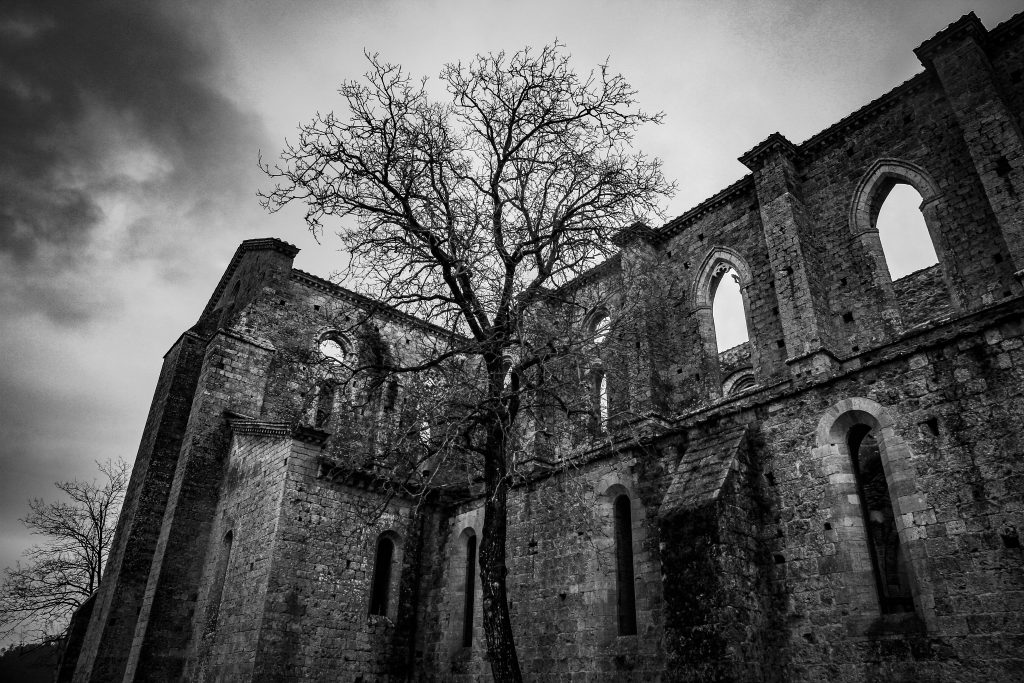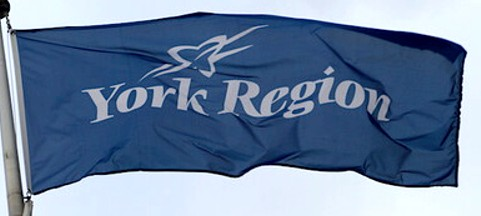
Canada has a vibrant and growing online gambling scene, with players looking for a top-notch gaming experience that also offers high-level security. As a gamer, your safety and security are paramount. This guide uncovers the safest online casino in Canada, illuminating your path towards secure and entertaining online gambling.
Understanding Online Casino Safety: Why it Matters
Online safety is often an overlooked aspect when selecting an online casino. However, it holds considerable importance. It’s not just about protecting your financial details; it extends to ensuring fair play, responsible gaming, and shielding your personal data from potential online threats.
Online casinos employ several tools and strategies to ensure safety. These range from secure encryption protocols, reliable software providers, licensing, and regular auditing for fairness. Understanding these elements allows you to choose an online casino with confidence, knowing your interests are safeguarded.
Key Indicators of a Safe Online Casino
An online casino’s safety can often be determined by a few key factors:
- Licensing and Regulation: Trustworthy online casinos are licensed by recognized regulatory bodies such as the Malta Gaming Authority (MGA) or the UK Gambling Commission (UKGC). In Canada, the Kahnawake Gaming Commission is a trusted regulator.
- Secure Encryption: Secure Socket Layer (SSL) encryption is a must-have for any safe online casino. This technology encrypts data transferred between your device and the casino, making it near-impossible for hackers to steal your information.
- Auditing and Fair Play: Safe casinos are regularly audited by third-party organizations such as eCOGRA or iTech Labs. They ensure the games are fair, random, and not rigged in favor of the casino.
- Reliable Software Providers: Reputable software providers like Microgaming, NetEnt, or Playtech are a good sign, as they only partner with trustworthy casinos.
- Responsible Gaming Policies: Look for casinos that actively promote responsible gaming. These casinos offer tools to help players control their gambling habits.
The Safest Online Casino in Canada: Our Pick
After meticulous research and careful consideration, the standout as the safest online casino in Canada is ‘Casino X’ (placeholder name). Here’s why:
- Licenses and Regulations: ‘Casino X’ is licensed by the Kahnawake Gaming Commission, ensuring Canadian players’ legal protection.
- Secure Encryption: ‘Casino X’ uses 128-bit SSL encryption, offering top-notch security for players’ personal and financial details.
- Auditing and Fair Play: eCOGRA regularly audits ‘Casino X,’ ensuring game fairness and reliable payouts.
- Reliable Software Providers: ‘Casino X’ hosts games from reputable providers like Microgaming and Playtech, offering high-quality, fair, and entertaining gaming.
- Responsible Gaming Policies: ‘Casino X’ actively promotes responsible gaming, providing various tools for players to manage their gaming habits effectively.
Final Words: Your Safety, Your Responsibility
While we’ve identified ‘Casino X’ as the safest online casino in Canada, remember, online safety is a two-way street. As a player, it’s vital to exercise responsibility, such as keeping your login information secure, understanding game rules, and practicing controlled gambling. Choosing a safe online casino is the first step in ensuring a secure, enjoyable gaming experience. Happy gaming!
]]>
Casino dealers are at the very heart of the gambling industry, spinning the roulette wheels, dealing out the cards, and ensuring the games run smoothly. However, have you ever wondered how much they make for their intricate skills and customer service expertise? This article delves into the earnings of casino dealers, taking into account various factors like base pay, tips, and geographical location.
Base Salary: A Starting Point
The primary income for casino dealers comes from their base salary. This is the fixed amount they earn, irrespective of the number of games they oversee, the players they interact with, or the money that flows across their tables.
The base salary varies significantly depending on the dealer’s experience, the casino’s size, and the geographical location. For instance, in the United States, the base salary of a casino dealer can range from around $20,000 to $30,000 annually. However, it’s important to remember that this is just the starting point of their potential earnings.
Tips: The Real Game-Changer
A significant portion of a casino dealer’s earnings comes from tips, also known as “tokes” in the industry. Tips are generally offered by winning players as a token of appreciation for the dealer’s service.
The amount a dealer makes in tips can vary greatly and largely depends on the generosity of the players, the dealer’s customer service skills, and the games they oversee. On average, tips can increase a dealer’s earnings by 50%-100%. For instance, if a dealer’s base salary is $20,000, they might make another $10,000-$20,000 in tips, leading to total earnings of $30,000-$40,000 per year.
Geographical Location: The Locale Impact
The location of the casino also plays a significant role in determining a dealer’s earnings. Dealers in high-end casinos in cities like Las Vegas or Atlantic City, where the stakes are higher and the players are more affluent, tend to earn more than those in smaller, local casinos.
To illustrate, in Las Vegas, a top-performing dealer can earn up to $100,000 annually when base salary and tips are combined. In contrast, a dealer working in a smaller town casino might make around $30,000-$40,000.
Other Factors: Training and Game Specialization
Dealers who have undergone professional training at a gaming school often have an edge and can command a higher base salary. Moreover, dealers who specialize in high-stakes games like Baccarat or Poker can potentially earn more in tips due to the larger winning pots in these games.
Conclusion
The earnings of a casino dealer are multifaceted, with various factors such as base salary, tips, location, and specialized skills playing crucial roles. A career as a casino dealer can be lucrative and exciting, especially for those with a passion for gaming and customer service. However, it’s important to remember that the higher earnings often come hand in hand with working night shifts, weekends, and holidays – when casinos are busiest. Like any profession, prospective dealers should weigh the pros and cons before stepping onto the casino floor.
]]>
Roulette, a classic game of chance, has been a significant attraction in casinos around the world for centuries. Despite its seemingly complex structure and numerous betting options, it is surprisingly simple to understand and play. This article aims to unravel the game’s intricacies, taking you from novice to proficient roulette player.
Understanding the Roulette Wheel
Before you dive into betting strategies, it’s crucial to familiarize yourself with the roulette wheel’s layout. In essence, there are two main types of roulette wheels: the European wheel and the American wheel.
- European Wheel: It has 37 pockets with numbers from 1 to 36 and a single zero (0). The numbers are randomly arranged and alternate between red and black.
- American Wheel: This wheel is similar to the European wheel, with an added double zero (00) pocket, making a total of 38 pockets. This additional pocket slightly increases the house edge.
Understanding the Roulette Table
Just as the wheel, the roulette table is also crucial to the game. The roulette table is where you place your bets. It is designed to represent the numbers and other betting options on the wheel.
- Inside Bets: These are placed on the numbers themselves. They include straight-up bets (betting on a single number), split bets (betting on two adjacent numbers), street bets (betting on three consecutive numbers in a row), and more.
- Outside Bets: These are placed on the areas outside the number field. They include color bets (red or black), odd or even, and high or low numbers. They offer smaller payouts but better odds of winning.
Playing the Game
Now that you have a grasp of the roulette wheel and table, let’s explore how to play the game.
- Buy Chips: Purchase roulette chips from the dealer.
- Place Your Bets: Put your chips on the table to represent your chosen bet. You can place more than one bet per spin.
- Watch the Spin: The dealer will spin the wheel and release a small ball in the opposite direction. All bets must be placed before the dealer announces “no more bets.”
- Collect Your Winnings: If the ball lands in a pocket representing your bet, you win. The dealer will pay out your winnings before the next spin.
Roulette Strategies
While roulette is largely a game of chance, some popular strategies might enhance your gaming experience:
- Martingale Strategy: This involves doubling your bet after every loss. The idea is to recoup all previous losses when you finally win.
- Reverse Martingale Strategy: This is the opposite of the Martingale strategy. Here, you double your bet after every win, aiming to take advantage of winning streaks.
- D’Alembert Strategy: This strategy involves increasing or decreasing your bet by one unit after a loss or win, respectively. It’s considered less risky than the Martingale strategies.
Remember, none of these strategies guarantee success but are simply different ways to approach the game.
Conclusion
Roulette is an exciting game that can provide hours of entertainment and potential profit. While it largely depends on luck, understanding the game’s fundamentals and exploring various strategies can significantly enhance your experience and possibly your winnings. Now, with this guide in hand, you’re equipped to take on the roulette wheel. Happy spinning!
]]>
In June 1931, the East York Workers Association was formed to address the economic and social hardships faced by East Yorkers during the great depression. By 1934, the association had over 1,600 members, with 400 to 500 people regularly attending their weekly meetings at local schools. The association not only aimed to improve living conditions of the unemployed, but also provided a social outlet for members at a time when money for entertainment was unthinkable for most families. The association would hold dances and card nights for members, providing a socialisation opportunity.
Prominent Canadians, including Ontario Premier George Henry (1930-1934), J. S. Woodsworth, the first leader of the Cooperative Commonwealth Federation (CCF), and Agnes Macphail, the first President of the Ontario CCF and the first woman elected to the House of Parliament in 1921, all spoke at their meetings.
One of the major challenges faced by the Workers Association was persuading the East York Council to change relief payments from vouchers to cash. The Province was pushing municipalities to issue vouchers for food and goods rather than providing cash to relief recipients. The Workers Association favoured cash relief payments as it would offer recipients more choice in purchasing goods from any retailer, arguing that cash relief was more dignified and boosted the morale and self-worth of recipients.
In November 1935, the Township Council agreed to change relief payments from vouchers to cash, albeit at a reduced rate. Unhappy with the reduced payments, the Workers Association called a strike of employable relief recipients. In response, the East York Council reverted back to the voucher system for relief benefits. The Workers Association then asked its members to withdraw their children from school, as the Province’s education grants were based on the number of students attending school each day. On November 13, 1935, the Council reluctantly reinstated cash relief. However, the Bank of Nova Scotia refused to grant a loan to the Township without the province guaranteeing the loan payments. Without the guarantee, the Township could not receive a loan and thus did not have the money to provide cash relief, ending the cash relief system.
Despite the failure of the cash-instead-of-voucher strike, the actions of the Workers Association drew enough sympathy for the unemployed to have the Association’s President Arthur Williams elected as the reeve of the Township in December 1935.
The Workers Association also blocked bailiffs from evicting families from their homes. This action had the support of many residents and Township officials. Even after Williams lost the reeve’s office in the December 1936 election, the more conservative Township Council continued to support blocking evictions.
By the end of 1937, the Township’s relief rolls dropped nearly by half from 8,000 in December 1936 to 4,700 in December 1937. With the end of the depression in sight, the need for the Workers Association dwindled. Its not certain if the Association dissolved or evolved into another organisation, but what is known is that the Township’s CCF club for a number of years after the Second World War was called the East York Workers CCF Club.
]]>
On the east side of Laird Drive stood the Leaside manufacturing plant of the Canada Wire and Cable Company. Founded in 1911 by Roderick Parke, Herbert Horsfall, and Emil Wallberg, the Company purchased 16 acres of land from the York Land Company in the new Town of Leaside in 1914, becoming the Town’s first major industry and beginning a long-lasting relationship.
The York Land Company, the development arm of the Canadian Northern Railway, had assembled over 1,000 acres in the wilds of north Toronto. Fredrick Todd of Montreal, a town planner and landscape architect, was commissioned to lay out a plan for a model town. Todd’s detailed street plan separated industrial and residential lands, using Laird Drive as the dividing road. With the plan completed, in April 1913, the Province incorporated the Town of Leaside with a population of 43.
The symbiotic relationship between the Town and Canada Wire lasted over 80 years. Canada Wire became a world leader in wire and cable production due to its Leaside Plant. Similarly, the Town earned a reputation as one of the most attractive neighborhoods for families and businesses in Toronto, if not the entire province, due to the presence of Canada Wire.
Originally, the Company produced cable for the Province’s expanding hydroelectric power network and wire rope for logging, mining, drilling, and elevators. In 1918, it funded the construction of the Town’s first water system, vital to the Town’s residential and industrial prosperity. The Company also built a 117-foot water tower, a Leaside landmark until 1956. Between 1918 and 1924, the Company donated space for the Town’s first school. Company workers were the Town’s first volunteer firefighters, responding whenever the Town’s fire alarm sounded in the Plant. The Company built over 60 houses on Airdrie Road, Randolph Road, and Sutherland Drive for its workers to purchase.
The Leaside Plant made significant contributions to the nation’s efforts in both World Wars. During World War I, the Plant’s 4,000 employees produced munitions shells, becoming North America’s largest producer of six-inch shells. A 10-coach train from west Toronto transported workers to and from the Leaside Plant. Its reputation as an efficient and reliable manufacturer led the United States Army to award Leaside Munitions, a subsidiary of Canada Wire, a contract in 1918 to produce shells. The U.S Army was so eager for Leaside Munitions to produce shells that it financed the construction of a factory on a 5-acre site beside Canada Wire’s Leaside Plant. However, the war in Europe ended before a single shell could be shipped out from the new Leaside factory. In return for the canceled munitions contract, the U.S Army gave Canada Wire the newly built factory.
The Company sold the factory to Durant Motors, which produced automobiles from 1924 to the mid-1930s. With the demise of Durant Motors in 1934, Canada Wire repurchased the 5-acre site to expand its production of wire and cable. During World War II, the Plant produced aircraft wires, navy cables, field telephone wires, and anti-submarine nets to protect our nation’s coastal harbors.
About 300 of the Plant’s 1,200 workers enlisted to serve the nation in the Second World War. The Company proudly displayed the Roll of Honour, inscribed with the names of employees who served, in its reception area. A tiny cross by a name denotes those who made the ultimate sacrifice. Now, the Roll of Honour is displayed at the Royal Canadian Legion Branch 10 on Pape Avenue.
After the war, the Leaside Plant shared in the nation’s economic prosperity. In 1956, the Leaside Plant expanded to include the 9-acre site of the former Frigidaire factory. In 1959, the Company added the 100-foot-high vulcanizing extruder tower, a Leaside landmark for decades. By the 1970s, the Company was the nation’s largest producer of cable and wire, with plants from coast to coast. At its peak, the Leaside Plant covered over 25 acres and was a major employer in the Town. The Plant continued to contribute to the well-being of Leaside until it ceased operations in 1996.
We salute the men and women who gave their labor and ingenuity for the betterment of the Company, the Town of Leaside, and the nation.
]]>
Shortly after I was elected as the Mayor of East York and therefore a Member of the
Metropolitan Toronto Council and Executive Committee, I realized that every one of the six
area municipalities which comprised Metropolitan Toronto with the exception of East York
had a municipal flag.
So I applied for and received authorization from East York Council to hold a design
contest for an East York flag. Now every contest needs a prize but I did not want to burden
the taxpayers with the cost so I wrote to each of the industries and businesses in the
Borough asking for a modest cash donation of $200.00 each towards the prize. Peak Freans,
Bate Chemical, Canada Wire and Cable, Coca Cola, Dominion Regalia and Seel Enterprizes
responded positively. However one other company sent me a cheque but indicated they
thought this was a foolish idea. I promptly sent back their cheque reminding them that this
was a matter of civic pride for a very special municipality with an incredible community
spirit.
Design submissions came from a great many adults but especially from school
children some whose teachers took it on as a class project. The winning design was
submitted by a Scarborough resident Raymond Taylor who had learned about the contest
from East Yorker Blain Till when they ran together daily in Taylor Creek Park. The prize
was $1000.00 for Mr. Taylor and $100.00 for the winning student design. Thus our flag was
a real bargain. On viewing the design a number of East Yorkers expressed the opinion that
the “ Y “ on the flag also represented the two branches of the Don River.
Once the design was approved by Council, Diana ( Didy ) Erb the wife of the Rector
of St. Luke’s Anglican Church on Coxwell, the Rev. Canon John Erb made the very first East
York flag. Ever after she was known as East York’s Betsy Ross. From then on the flag
appeared throughout the Borough including prominently on all of our road signs.
Unfortunately in its efforts to ensure we are all Torontonians first, the amalgamated city is
replacing our East York street signs with large Toronto blue and white signs. One way we
can help to keep the very special community spirit of our Borough alive is by flying the East
York flag.
The East York Historical Society is selling 4” x 6” East York Flags and will order larger ones
if there is sufficient interest.